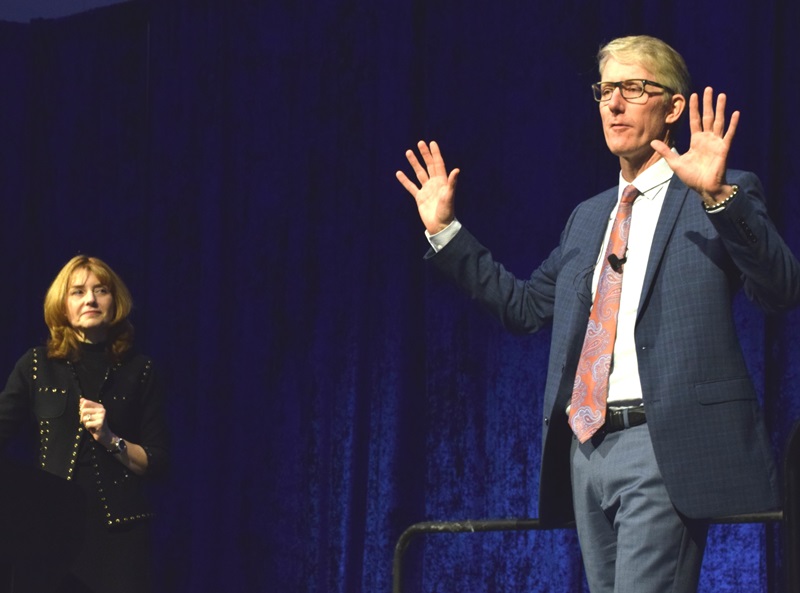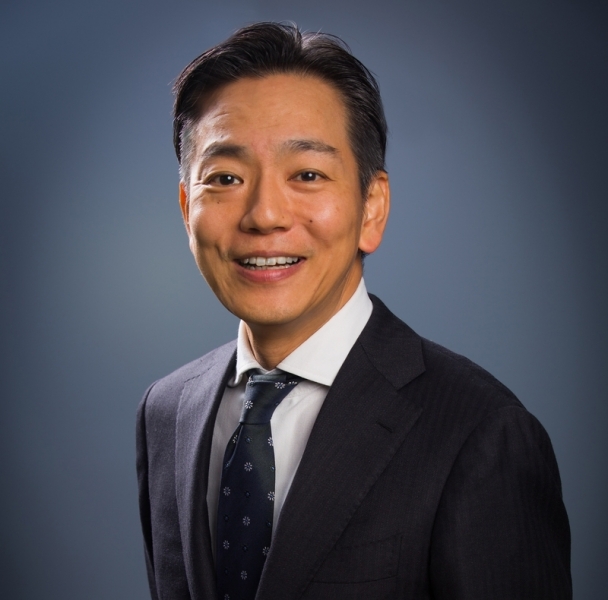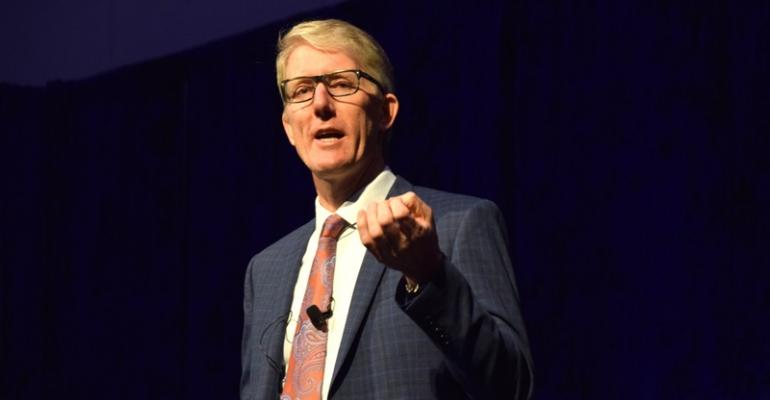DETROIT – A problem needs to be recognized before it can be fixed, and Nissan North America executives realize many of the automaker’s suppliers are disgruntled about relentless pressure to cut component prices and the inability to collaborate early on new-vehicle programs.
“It’s obvious we get you involved too late, where the concepts are decided and the cost structure’s probably already been decided,” Chris Reed, vice president-components engineering at the Nissan Technical Center North America, says at the annual conference hosted here this week by the Original Equipment Suppliers Assn.
“You’ve got a quote here and a budget here, and it’s an impossible battle,” Reed tells a crowd of about 650 automotive-supplier executives. “And then there are compromises that are made. We’re getting used to choosing the best compromise. That doesn’t work. Our organization is still struggling with that because it seems like the right way to do things and it’s not, right?”
Planning Perspectives’ annual study of the relationship between suppliers and North America’s top six automakers identifies a rift that has been growing between Nissan and its suppliers since 2014. The 2016 Working Relations Index, a component of Planning Perspectives’ study released last May, shows Nissan near the bottom, scoring slightly better than FCA U.S.
The survey of auto suppliers found Nissan threatening to rescind business if a supplier didn’t agree to the automaker’s demands, but the tactic backfired as suppliers pushed back.
“Nissan became adversarial…and suppliers…gave them less,” Planning Perspectives President John Henke told WardsAuto earlier this year.

“So we’ve alienated ourselves a little bit,” Reed says. “And the first step is recognizing that. The second step is what you will do going forward.”
OESA President and CEO Julie Fream says the relationship has been “challenged” for a few years, largely because of pressure for cost reductions. “That has in some ways created a bit of a rift as Chris said between the supplier community and Nissan,” she says.
Fream is pleased to hear Reed talking about creating a new environment that fosters early collaboration and “win-win” negotiations with suppliers.
“It’s important (for Nissan) to say, ‘how will you do that?’ because you have to rebuild those connections to the supply community,” she says.
Nissan North America in April appointed Hiroki Hasegawa as new vice president-purchasing, and he spoke a few months ago to an OESA town hall forum to begin the process of mending fences.
But there is much to do, and Reed is attempting to help fix the process from the product-development side of the relationship. He suggests a 2-phase solution that includes “pre-sourcing” to start the collaboration further upstream.
“We get together on cost, getting your ideas together with our ideas so we can actually make the right budget and choose the right process, earlier than we’ve ever done,” Reed says.
The other phase he suggests starts earlier in the process to identify new technologies and concepts worth exploring.

“The way our development process works, two to three years ahead is not very early actually, and five to six years is (too far out) to get new ideas we can collaborate together on,” he says.
Somewhere in between would be enough time for engineering and purchasing staffs in North America and Japan to identify technologies of interest for future vehicle programs and cultivate them with suppliers, Reed suggests.
He looks to technology companies on the West Coast for inspiration, saying they “have really got the hang of this concept of value for the customer.” If the guiding principle for both suppliers and Nissan is to find affordable technology that works well and pleases (rather than confuses) the customer, then the relationship will begin healing itself, he suggests.
Fixing the broken relationship becomes even more important now that Mitsubishi will join the Nissan-Renault Alliance after Nissan recently acquired a 34% controlling stake in the Japanese automaker. Reed says R&D, purchasing and supply-chain management eventually will be combined for all three automakers.
“There’s a lot of opportunity there,” he says, pointing to the combined 11% global market share.
Reed invited comments, questions or concerns from suppliers, either channeled to his team directly or through OESA, based in Troy, MI.
OESA conferences and town hall forums tend to be targeted for OESA members only, but this year’s conference (the 18th to be held since 1998) was the first one open to media.
Some speakers privately voiced concern that media presence squelched a frank discussion in some ways, but Fream is hoping enough members agree with the decision and that future conferences will be open as well.





